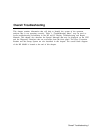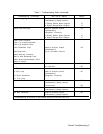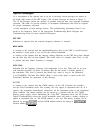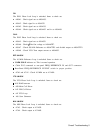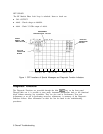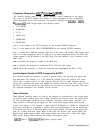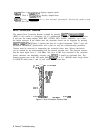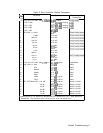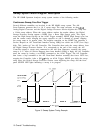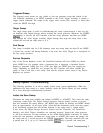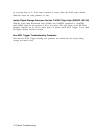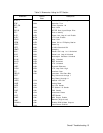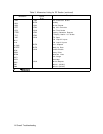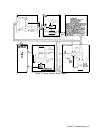
@iZY) Trace A
dIVIEW)
(KSd)
displays negative peaks.
(SHIFT) Trace A
‘[B)
(KSe)
displays sampled data.
(S HIFT) Trace T Trace A(ksa)returns to the normal automatic detection modes and
removes the CRT indication.
Error Correction Routine
The internal Error Correction Routine available by pressing
@iFi)
w[~~~~~~~~~
SPAN]
(KSW) is also useful as a diagnostic aid. If a malfunction causes the routine to stop, restart
it and note the control settings (RES BW,
ATTEN,
REF LEVEL,
LOG/LIN,
etc.) when
the failure occurred. If the routine runs, the correction factors can be displayed by pressing
(SHIFT]
“‘@
(KSw).
Figure 2 displays the data for a typical instrument. Table 2 gives the
parametric information, specifications and a place to start the troubleshooting procedure.
Caution must be exercised in interpreting the correction factor data. Wrong conclusions
can be reached by not understanding how the internal program runs. The program assumes
that the input signal level is -10.0
dBm.
Any error in this level translates to the correction
factors; therefore, the Amplitude Accuracy test
(RECALL]
8 should be performed first. The
internal program runs in the LIN mode while
[RECALL]
8 is in 1 dB/LOG mode. Large offsets
in LOG/LIN offset (lines 1 and 14) will cause errors in the data.
h7
REF
-7.0
dBnl
ATTEN
10
08
-0.17
ae
1
dB’
0.30
dB
0
25
dB
0.20
dB
0.21
ClB
0
05
dB
155.000
unr
0.00
dB
75.000
unz
-0
10
dB
18.000
KHZ
-O.lB
as
13.000
KHZ
L50
dB
-11.000
ltHZ
8.20
dB
-400
HZ
0.11
ClB
200
HZ
0.25
LiB
-1Eio
HZ
0
25
de
-52
HZ
0
20
ClB
-‘in
HZ
0.05
dB
-41
HZ
-0.22
dB
-36
HZ
-0.17
dB
-0.03
dB
-0.07
oe
-0.03
.3B
-0
15
dB
CORR’D
-0
08
OB
-0.18
dB
-D.IS
dB
-0.02
dB
-8.02
dB
-0.02
dB
-0
02
dB
-0
02 as
-0.02
dB
START
1Em
000 000
MHZ
STOP
ino
0
RES
BW
30
HZ “BW
188
HZ
SWP
i
Figure 2. Error Correction Routine Data
8 Overall Troubleshooting




